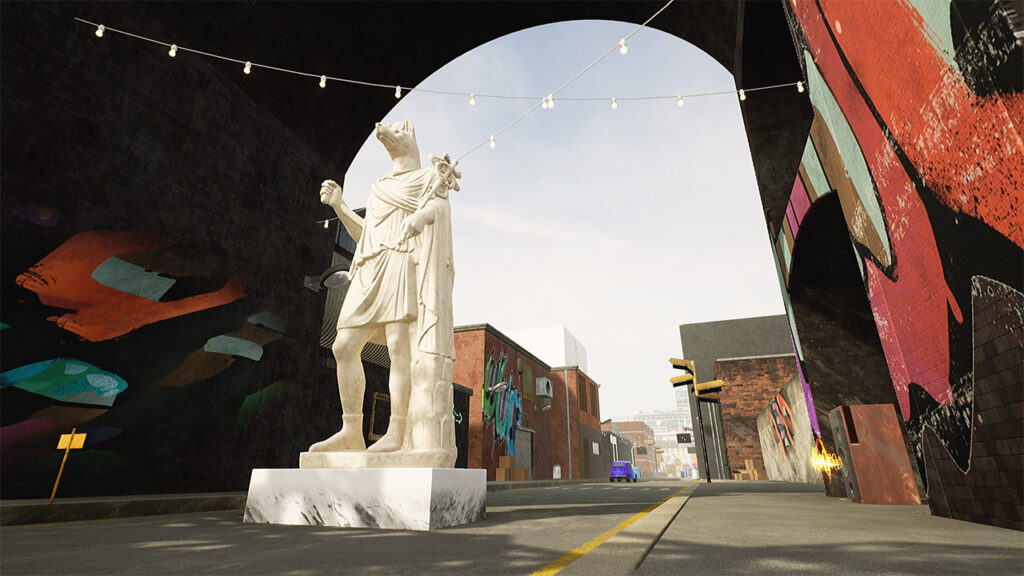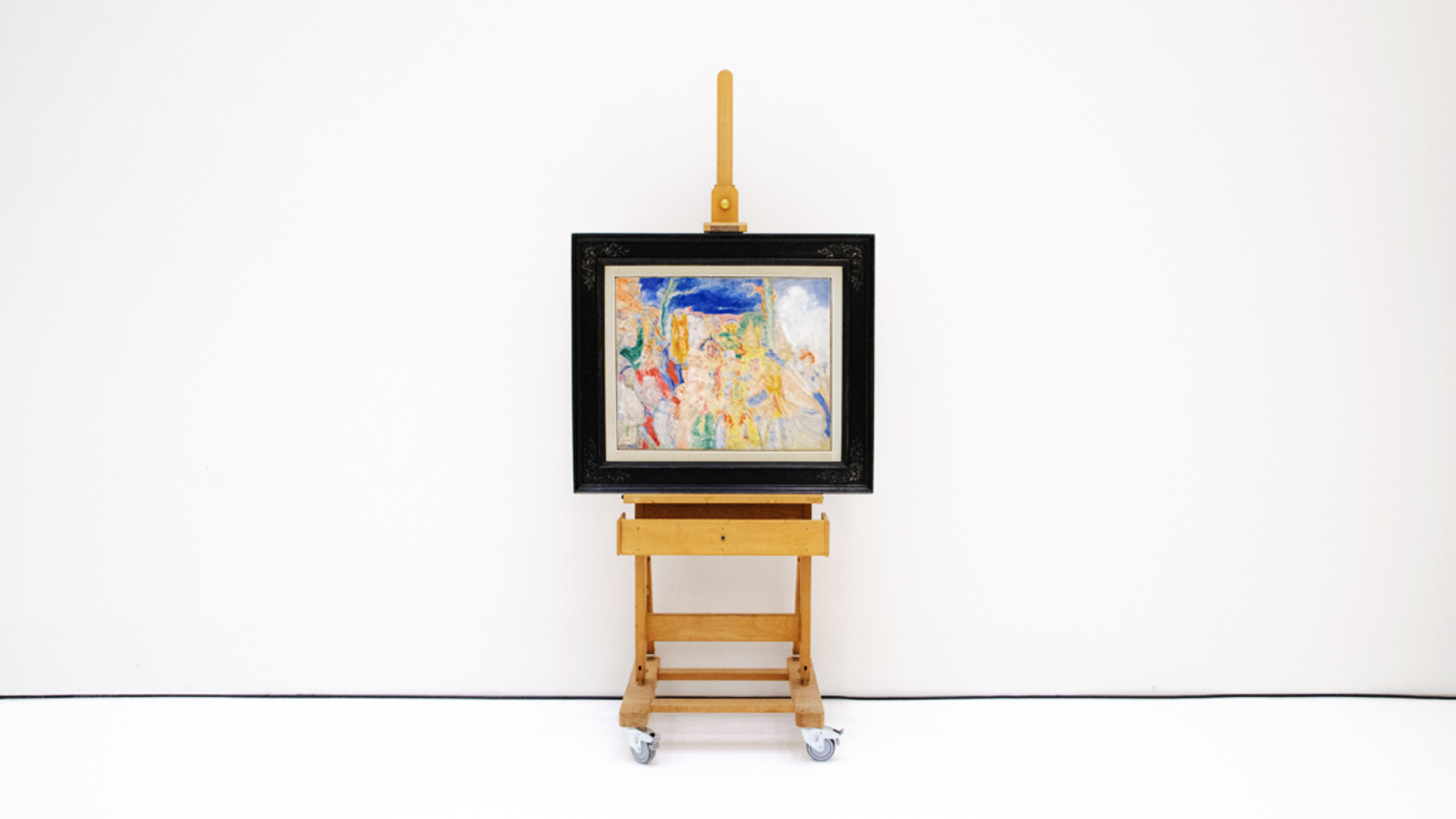2022 witnessed the further integration of Web3 into museum projects worldwide. Below, JCC lists some of the most notable Web3 initiatives by museums this year in chronological order:
Ukraine Inaugurates Its Museum Of War With A Collection Of NFTs
On March 25, the Ukraine ministry unveiled Meta History: Museum of War with a series of NFTs capturing key points of Russia’s illegal invasion. Per its mission, the project aims “to preserve the memory of the real events of that time, to spread truthful information among the digital community in the world, and to collect donations for the support of Ukraine.” The initiative was launched with the support of NFT platform Fair.xyz.
The chronology currently encompasses moments stretching from Ukraine President Volodymyr Zelenskyy announcing the severing of diplomatic relations with Russia, to rocket strikes on Kyiv, to the delivery of military supplies from NATO allies. Each NFT features a verified tweet paired with striking visuals created by artists including Margarita Polovinko, Ann Khomych, and Sveta Bilyk. The collection drops today, with prices for each NFT starting at 0.15 ETH and all proceeds going to the Ministry of Digital Transformation to aid the Ukrainian army and civilians.
ICA Miami Becomes The First US Museum To Launch Its Own NFT Platform
On April 4, ICA Miami launched its NFT platform in partnership with Palm and LiveArtX. Released to coincide with its annual fundraising gala, the 365 Party, the platform was inaugurated with an auction of three works by artist Cory Van Lew in both physical and digital forms. Four pieces (including the aforementioned three) were created onsite at the gala, with one artwork entering the museum’s permanent collection. Buyers could place their bids via the website in cash or in Ethereum, with proceeds due to support the museum’s ongoing educational mission.
Following the auction’s end on April 9, the museum plans to keep the NFT platform running for future programming, such as engaging with the museum’s constituencies, building conversations through pieces within its collection, and producing new work and context for the work.
The Royal Museum of Fine Arts Antwerp Arrives On-Chain — Not With NFTs, But ASTs
In late April, in partnership with investment platform Rubey, the Royal Museum of Fine Arts Antwerp (KMSKA) launched its first art security token (AST) offering centered on Belgium artist James Ensor’s 1924 canvas “Carnaval de Binche.” The artwork has been virtually fractionalized into one million equal parts, registered on the Ethereum/Polygon blockchain, with each share priced from €150 (about $158).
These AST buyers will form a community that KMSKA has plans to cultivate and engage. For one, they’ll be regularly updated with any information related to the work, whether that be temporary loans or fresh scientific insights. Additionally, KMSKA has broached exclusive shareholder perks, such as a private viewing of the painting upon the institution’s reopening.

Building Arkive, The World’s First Decentralized Museum
In early July, having closed a $9.7 million seed round, Tom McLeod unveiled Arkive, a museum whose collection and curation — and potentially, physical location — rests in the hands of its members. This “down-up” model will determine the culturally significant items that will enter the museum’s collection, effectively empowering its community with a voice and a vote. “This is an opportunity right now when the world is flattening,” says the Founder of Arkive, “when people are focused on placing things in positions of maximum impact and utilizing the power of the internet and blockchain.”
Already, for its first curatorial season centered on game-changing technology, Arkive’s community has voted in early acquisitions, including the 1954 patent for ENIAC, the world’s first general-purpose computer, and a vintage print of Lynn Hershman Leeson’s “Seduction,” part of her 1985 Phantom Limb series. A prototype of MTV Video Music Awards’ Moonman trophy is the latest to join the collection. The history of these items will eventually be minted into NFTs to manage provenance, quality, and authentication on-chain.
Shanghai Museum Becomes First Chinese Institution To Release NFTs On Its Own Blockchain
Shanghai Museum’s Museum of the Sea (海上博物) platform launches this week with the aim of digitally activating Chinese cultural heritage. Every NFT series released on the platform will be collected by the institution to ultimately create a digital (likely metaversal) museum housing virtual cultural relics and art. The Museum of the Sea has also reportedly cemented partnerships with a number of international IPs and local museums to grow the platform and in turn, advance national heritage.
With Museum of the Sea, Shanghai Museum marks its entry into the digital collectibles market, but additionally, has become the first Chinese institution to manage its own blockchain system. The digital platform is supported by Shangbo Chain (上博链), which, like the collections it encompasses, has been independently developed and will be independently owned by the museum.

Occupy White Walls Hosts Birmingham Museum’s First Metaversal Arts And Music Festival
From October 11, Birmingham Museums Trust (BMT) will debut an arts and music festival in a digitally recreated Digbeth in Occupy White Walls’ (OWW) “artiverse.” KULTURA Sessions: BRUM homages the neighborhood via a “cyber reinterpretation” of its highlights such as Gibb Street and the Custard Factory. Players can visit art installations dotted throughout the environment, and tune in to music and poetry performances — all of which have been created by six West Midlands artists including musician Ace Ambrose, poet Jasmine Gardiso, and new media artist Antonio Roberts.
KULTURA Sessions: BRUM will premiere in a Twitch stream by influencers Blue and Queenie, after which participants can continue to revisit the performances in OWW. The project has been funded by The Space, a digital agency formed by Arts Council England and the BBC to promote and encourage digital innovation across the UK’s cultural sector.
The Himalayas Museum Hosts Shanghai’s First NFT Exhibition
In November, the Shanghai Himalayas Museum, an art gallery owned by the property giant Shanghai Zendai Group, launched its inaugural month-long exhibition, “Encrypted Shanghai: Himalayas Web3 Digital Art,” focusing on four sectors: digital collectibles, independent artists, profile pictures (PFP), and NFTs. (Which included IPs such as Phanta Bears, Theirsverse, and Azuki.)
This marked the first time that NFTs were exhibited in Shanghai, a notable development because the central government in Beijing prohibits their sale and resale on the Chinese mainland. To commemorate the exhibition, ACG (Anime, Comics, and Games) powerhouse Bilibili unveiled a collection of 2,022 AI-created digital collectibles.



